By Juhi Mathur
Geometry has been an intrinsic part of human civilisation, where every material object’s functionality is also defined through its dimensions, renowned mathematician Euclid defined geometry as a science of measuring the planes and surface and he, the word geometry itself is derived from two Greek words – geo (earth) and metrein (to measure). There are two terms that underpin Sunil Yadav’s works – geometry and geoscapes – showcasing an innate quest to decipher the hidden patterns in his surroundings. Throughout art history, landscape has been an intricate part of expression as seen in several paintings of natural sceneries ranging from romantic elements in John Constables’s representation of Suffolk countryside to Impressionist renderings of lilies by Claude Monet. Keeping the western canon aside, landscapes have been part of Revivalist movement in Bengal in the early 20th century, as seen in the contextual modernism practised by Nandalal Bose and Gopal Ghose, each artist is trying to present their vision of reality around them through their unique visual understanding.
h
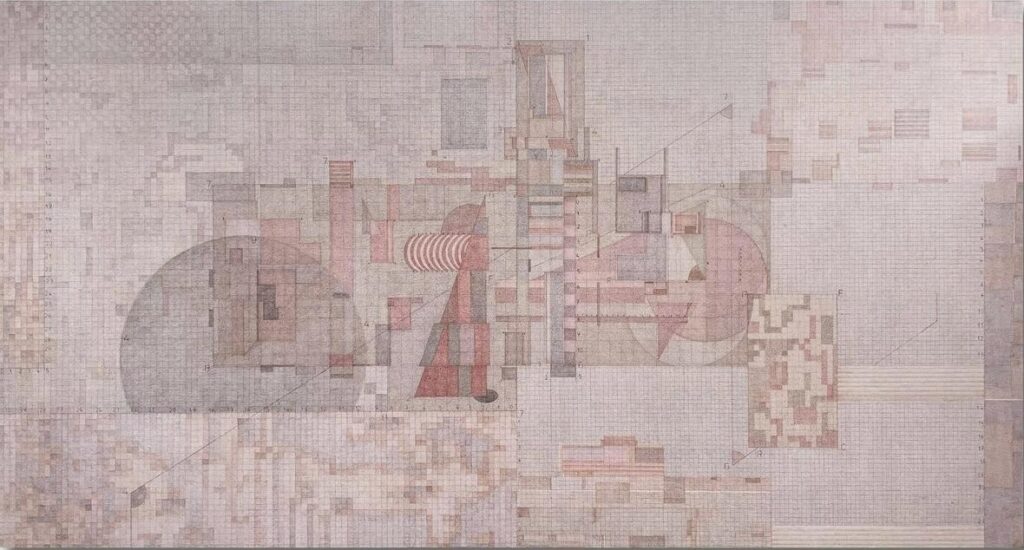
In a similar vein, Sunil Yadav’s practice began as a meditative attempt to capture the minutest details of the world around, both in a corporeal and temporal format. He has mentioned that his journey in art began as a student in Textile design in Allahabad university, where his world was filled with technical studies of textures and cloth which did influence his journey further, pursuing his masters in painting in Khairagarh. Sunil experimented with different design patterns that transformed into leit motifs in his artworks, taking inspiration from the technicalities of patterns that create a fabric. The end result was visually vibrant, however, it was touching upon the surface of clothes, layering his canvases with a chromatic collage that had more elements of design rather than an individualistic form. However, this changed with his shift to New Delhi, when his art practice evolved as a response to the ever-evolving landscape of contemporary art.
h
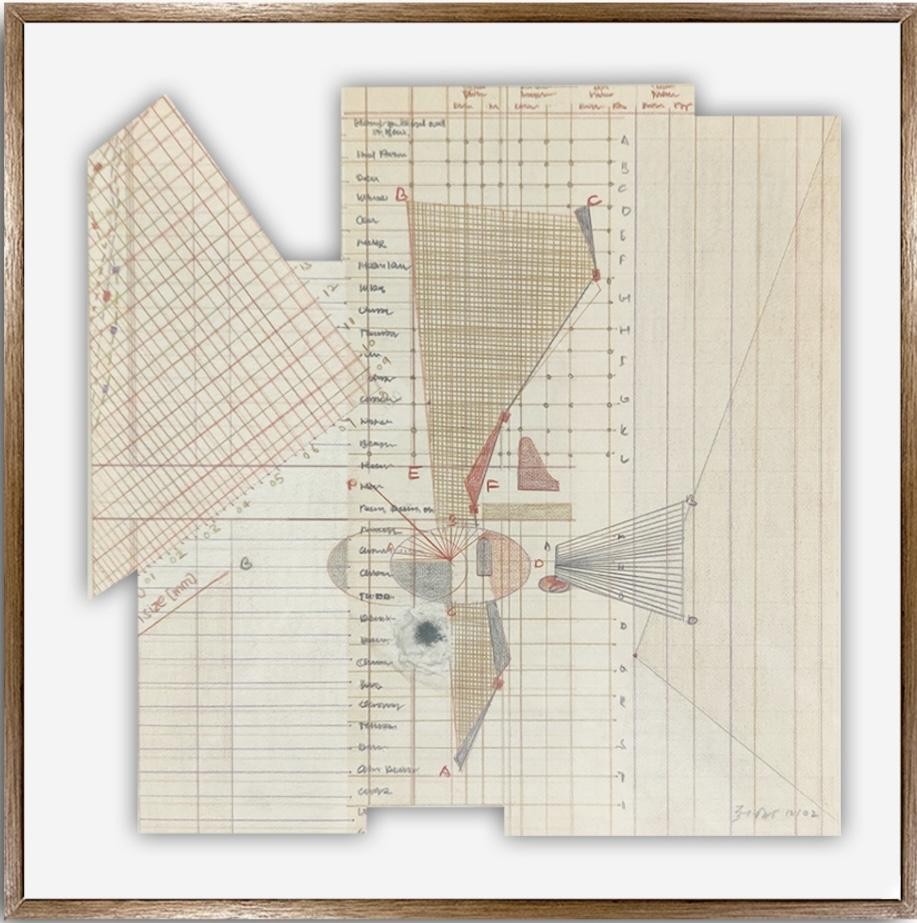
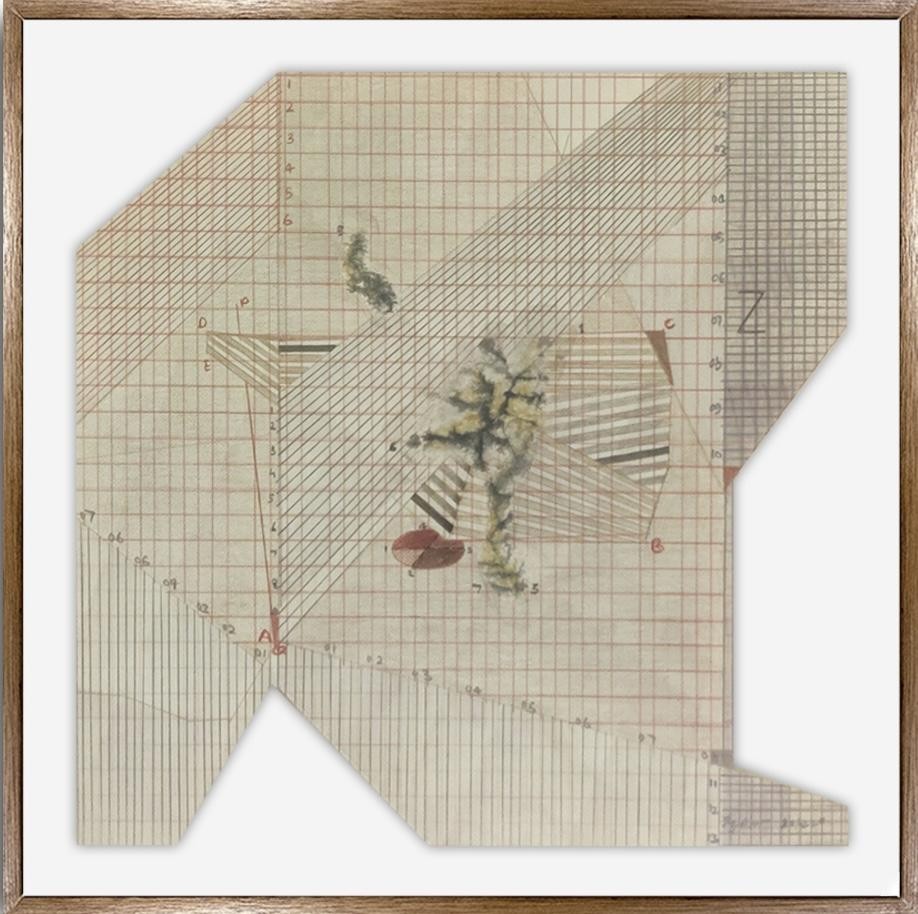
Sunil’s visual vocabulary developed as a result of inquiry into the forms of daily objects and architectural spaces, whilst studying the basic forms of material. He has emphasised on the complexities of building blocks that constitutes a structure, citing that his artworks function as revelations, reproducing his perception of the space. An inherent part of Sunil’s visual practice is the layering of everyday objects – leaves, twigs, houses, windows, old buildings and maps. A medley of space that is presented on a two-dimensional surface. This layering becomes noticeable with the usage of graph papers, and pencil sketches that chart out the dimensions of these found objects, as Sunil uses his art to delineate the geometricity of the world around him. Through this approach of geometric abstraction, he brings up the question of structuralism that is embedded in the world around us, in anthropological systems as well as in cultural context.
j
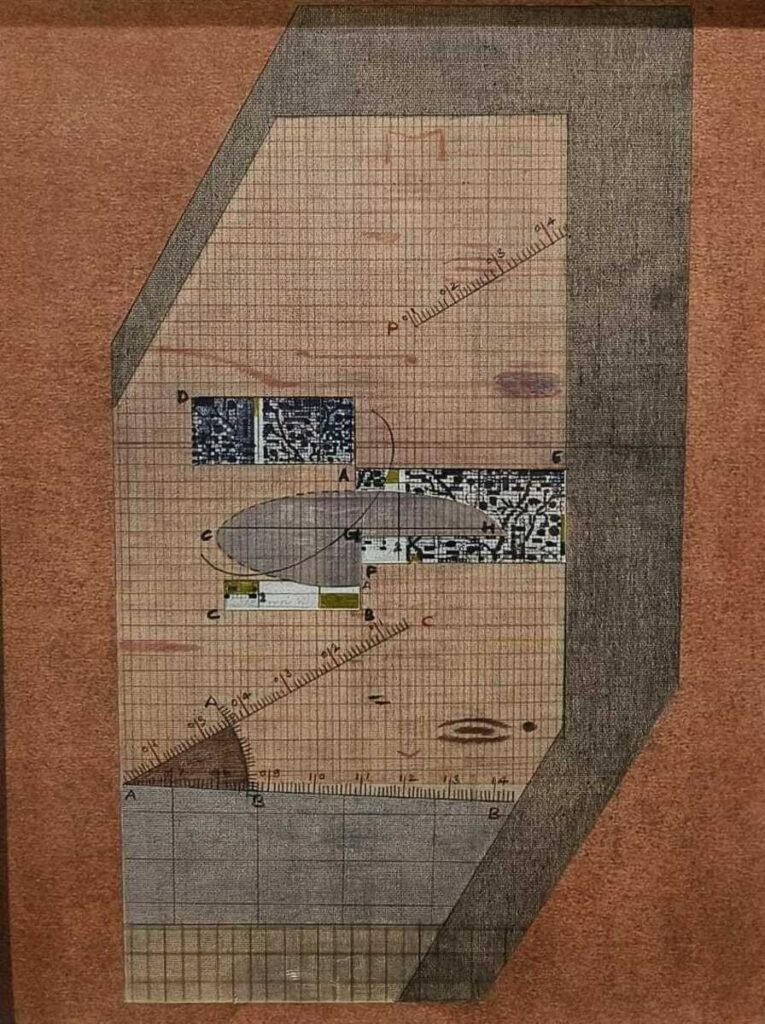
Mixed Media on Paper,
13.5 x 10.5 ″
Focusing on the multidimensionality of objects, Sunil has delved into the function of art and how it has been an extension of his own imagination, which can be explained through theories of Jean Paul Sartre when he explains the existence of a work of art. Sartre has defined any work of art as illusory, it does not exist in the real world and is born out of imagination, and works as a tool of revelation, where the freedom of human thought discloses realities of the world, hence bringing aesthetic pleasure to the creator and the observer. In similar manner, Sunil’s works are born out of his imagination and his need to develop his relationship with the world, and thus carry metaphysical elements in it.
In his current series “Unseen Realities” Sunil’s visual narratives unravel the connection between the visible and invisible worlds, as he merges the geometric forms, resultant abstractions along with highly detailed naturalistic forms. Leading to dynamic composition that is layered with details and multiple perspectives of the artist. This medley of shapes and forms appear to be a pixelated image or a technical glitch at first glance, however each deviation alludes to the underlying layers of patterns that form each object. Sunil’s works visualise the atoms that form the world and present the smallest crooked details of the universe.
bbjbj
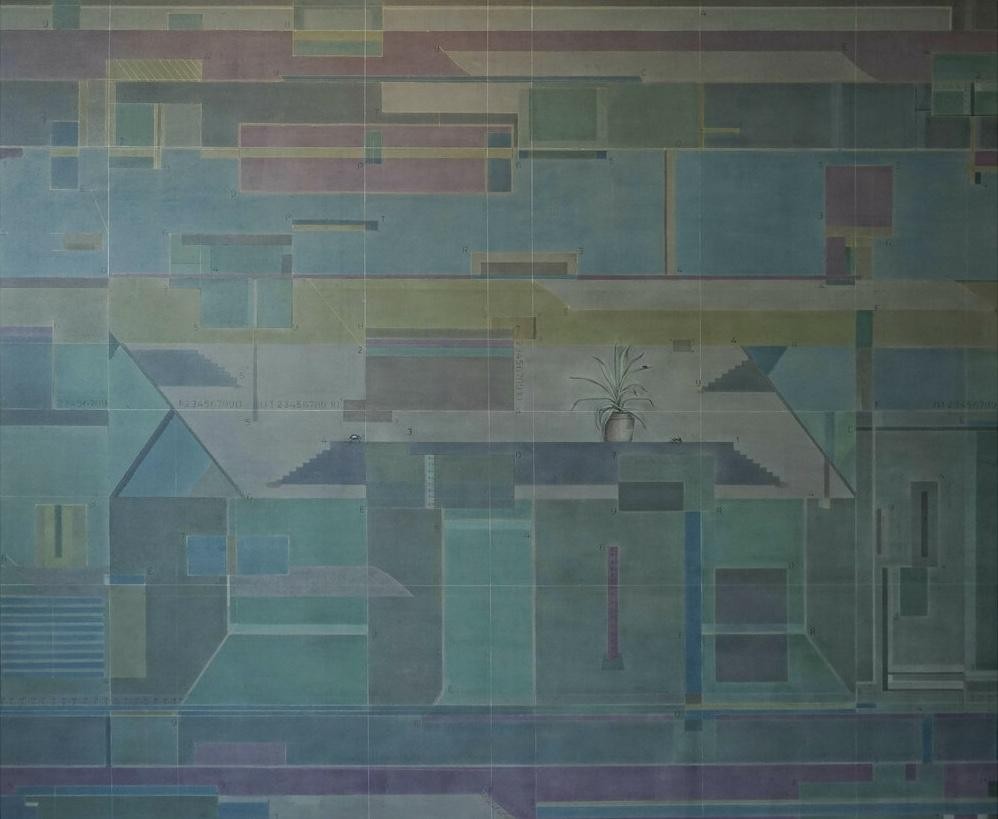
Within this series, Sunil focuses on different patterns like the veins of a leaf, the texture of a cloth, the sinewy lines imitating the body of insects as they inhabit a world of patterns and geometric calculations; shifting his gaze towards the flora and fauna and how it fits in the narrative that is defined specifically by urbanscapes. The vastness in his canvas is also enhanced through the use of various image making tools like graphite and pastels on canvas giving it a more rustic dimension, as Sunil brings a certain level of meditative cognisance in his visual patterns. He has paid specifc attention to the repetitive patterns in his drawings and paintings, he makes graphs with grids and numbers, measuring the world through his calculations and combinations, citing his works as commentary on the ideas of reality and perception. This intricate connection between science and art is aptly explained by John Constable “Painting is a science”, and this statement is backed up by renowned philosopher and Art Historian Ernst Gombrich who has explained that science is involved in both the creation and appreciation of art.
j
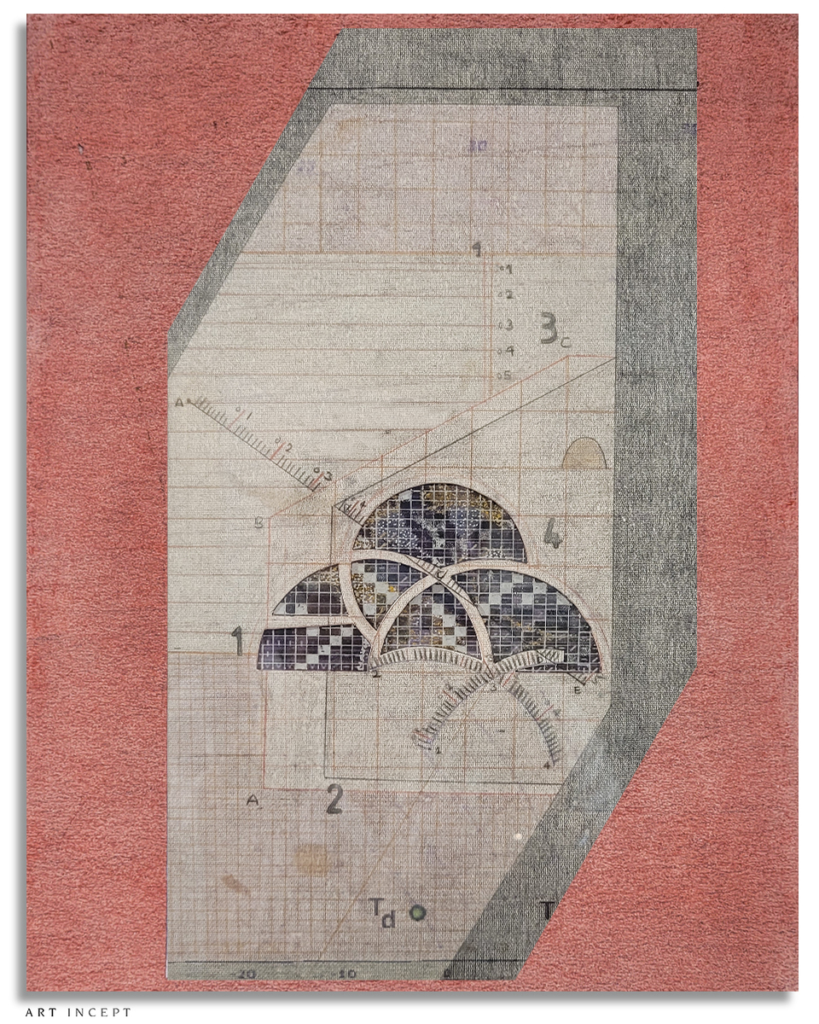
13.5 x 10.5 ″
Gombrich also argues that each creative expression is not born out of the real world, and it is rather a result of an idea or a concept that is created by the artist, Gombrich has termed his concept as ‘schema’. Through this process of ‘schema’, Sunil presents ideas of those landscapes, flora, and fauna and how they connect with his vision of the world and sphere he occupies, as Gombrich would explain that – ‘he sees what he paints, and not paints what he sees’.
j
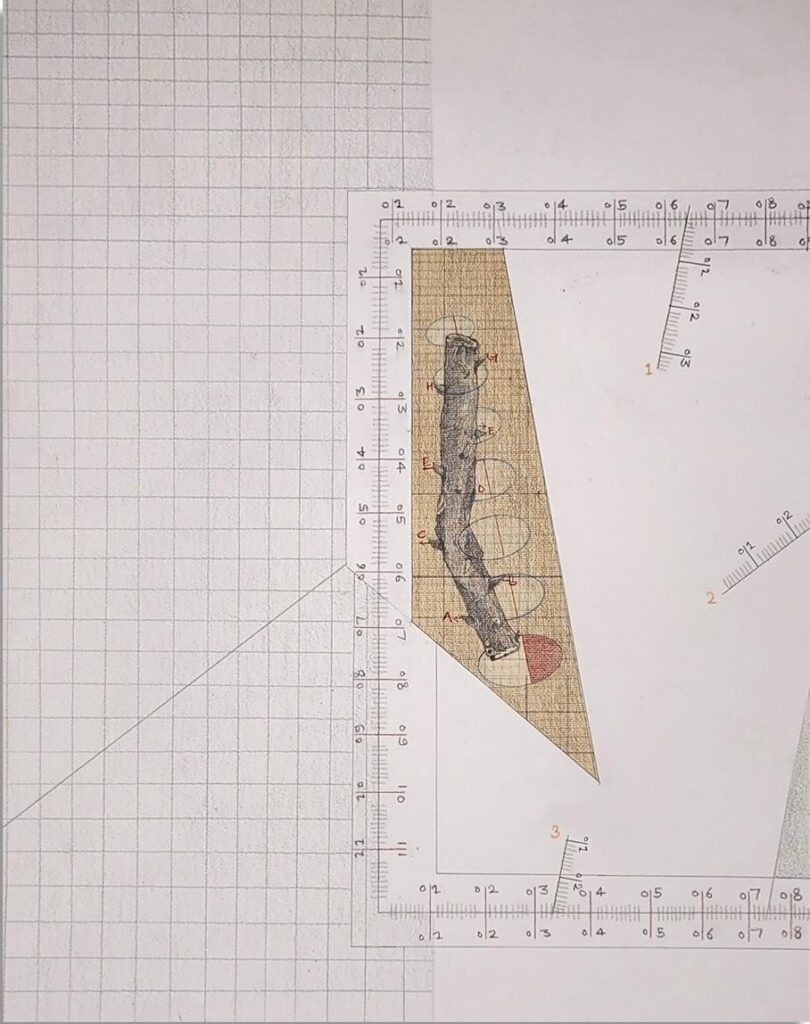
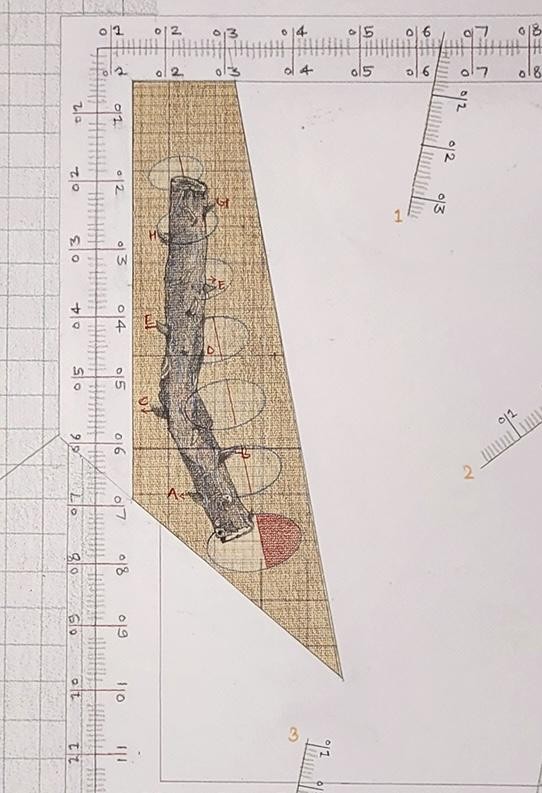
This provides more layers to Sunil’s work as they state his cerebral machinations in a visual format, they give us a viewer, varied dimensions of the world, encouraging us to project our perceptions on his semi-abstract illustrated landscape. Hence, even what we observe in Sunil’s art is not purely objective and is layered with our predispositions which work in symphony with the abstract forms as they create a different experience for everyone. Drawing inspirations from the several figures in contemporary and modern art landscapes, like Atul Dodiya, Jitish Kallat, and Olafur Eliasson, Sunil brings forth a visual narrative that speaks of his views on changing ecologies and resultant shifting patterns of fauna and flora. He looks at the material world as an inspiration for the manifestation of his metaphysical lore that dives into the relationship between colours, patterns, geometricity of forms, and human perception – underpinning the multifaceted aura of the physical realm and its impact on transient and mutable human psyche.
About the Artist:
Sunil Yadav (born in 1988 at Jaunpur, U.P.) is a Delhi based artist. He has completed his graduation in Painting from Allahabad University, Allahabad U.P. (2010) and Post-graduation in Painting from I.K.S.V. Khairagarh C.G. (2013). Through his recent art exploration, he found the endless possibilities in the creation of art where his primary concern is conveying his visual perception of mathematical symbols and geometrical shapes of his surroundings. He observes one common thing in his art practice and in the study of mathematics that is ‘geometry’, which is prominently rooted in shapes and spaces. In his geometric-abstraction, he is trying to develop his own pictorial and artistic vocabulary that evolved through simple and elegant mathematical and geometric elements, shapes, patterns, designs, lines, and angles.
He is a recipient of several awards from prestigious art organisations including – 1st award for Confluence 18th International Art Contest (2018), Platinum Emirates Award (2018), Platinum Award (2017), and Gold Award in Central Zone (2015) from Prafulla Dahanukar Art Foundation Mumbai, All India Trinale Award by State Lalit Kala Academy, Lucknow (2016), Kashi National Award, Banaras (2016), and U.P State Award by Lalit Kaka Academy, Lucknow (2015). He currently resides in Greater Noida, U.P. and is represented by Art Incept.
